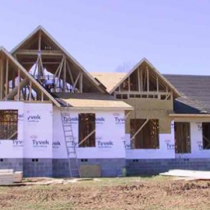5 Things You Need To Know When Building A New Home

Building a new home is an exciting but at times overwhelming experience. For a builder it is very routine, which is why you need to be an active participant in all aspects of the process to ensure you end up with "YOUR" dream home.
Building your new home cannot be a passive exercise. There are many decisions that "must be" made and if you are unable or unwilling to make them you should look for proper and qualified assistance, or you will force your builder to make them for you running the risk that things won't turn out the way you envisioned it or cost what you thought.
Here are 5 things you must know and take into consideration when building your new home:
1. Know your numbers
Before you start building your new home, run some numbers to determine whether you can afford to build the home you want. Most house plans offer a cost to build tool (usually for a nominal fee) to give you an accurate estimate of construction costs based on where you're building. The numbers include the costs of construction, tax benefits, funds for the down payment and slush account, and other related calculations.
Once you've determined you can afford to build the house you want — purchase your house plan and head to the bank to arrange for financing. Keep in mind that home construction lending is a little different than regular mortgage financing. First, you'll need a home construction line of credit that will be used to pay subcontractors and suppliers who perform work and provide supplies. Once your house is constructed, you will need a residential mortgage to pay off the construction line.
2. Check the reputation of your builder
Many builders are out there, but not all are created equal. Do a little research to find out which builders have the best reputation. Whether you search for information online or get recommendations from your family and friends or enlist the assistance of a design professional experience with home builds, find out whether a builder is respected for doing quality work, as well as being punctual.
3. Build with resale in mind
No matter how much you love the house that you are building, it's unlikely that it will be the last home you will ever own. Knowing that, you should be mindful of its potential resale value. Don't add so many upgrades that you overprice your home for the neighborhood. And don't choose anything too out of the ordinary. Ask yourself if the features you're considering installing are likely going to appeal to others.
4. Think green
Make sure you do your research to maximize energy-efficiency in the design of your new home. Your architect, designer and builder can help ensure that the layout takes advantage of south-facing windows so you get as much sunshine as possible heating your home. Whereas other areas are located or have smaller windows to minimize heat loss. Spend time choosing your insulation and HVAC systems, as well as energy-efficient appliances and water saving plumbing fixtures.
5. Don't forget the punch
Part of the final phase of building a new home is to go over your "punch list." A punch list is a list created at the end of construction that shows what needs to still be done or what needs to be repaired on the new construction. You are generally required to create this list the week before closing and during your final walk through. Having a design professional attend this walk through provides another eye trained to see beyond just the space but note every detail. If you have opportunities to walk through the site during your build you should always be taking notes. If you have a real estate agent, it's a good idea to have them participate in the punch list because they are not emotionally attached to your home and may have a better eye for identifying flaws.
Problems typically fall into two categories: reasonable flaws and unreasonable flaws. Reasonable flaws are flaws that fall within the tolerances of building construction (or insignificant flaws that generally do not affect the quality of the new home). On the other hand, unreasonable flaws are flaws that must be fixed. These problems do affect the quality of the home. Once any unreasonable flaws are corrected in your new home, this is called substantial completion, which means the new home is livable and can be occupied. Before closing on your new home, you'll have one final walk through to verify that the items on your punch list were fixed. If the new home has reached the point of substantial completion, you should be able to proceed with closing even if everything was not completed.
Be sure you put the money for the completion of your punch list on hold. This will allow you to move into your new home while still requiring the builder to complete the items on the punch list. The punch list marks an exciting time in the process of building your new home, because your home is almost done! Remember not to get so excited and breeze through your punch list, because you don't want to regret that you didn't take the time to fix these problems properly.


